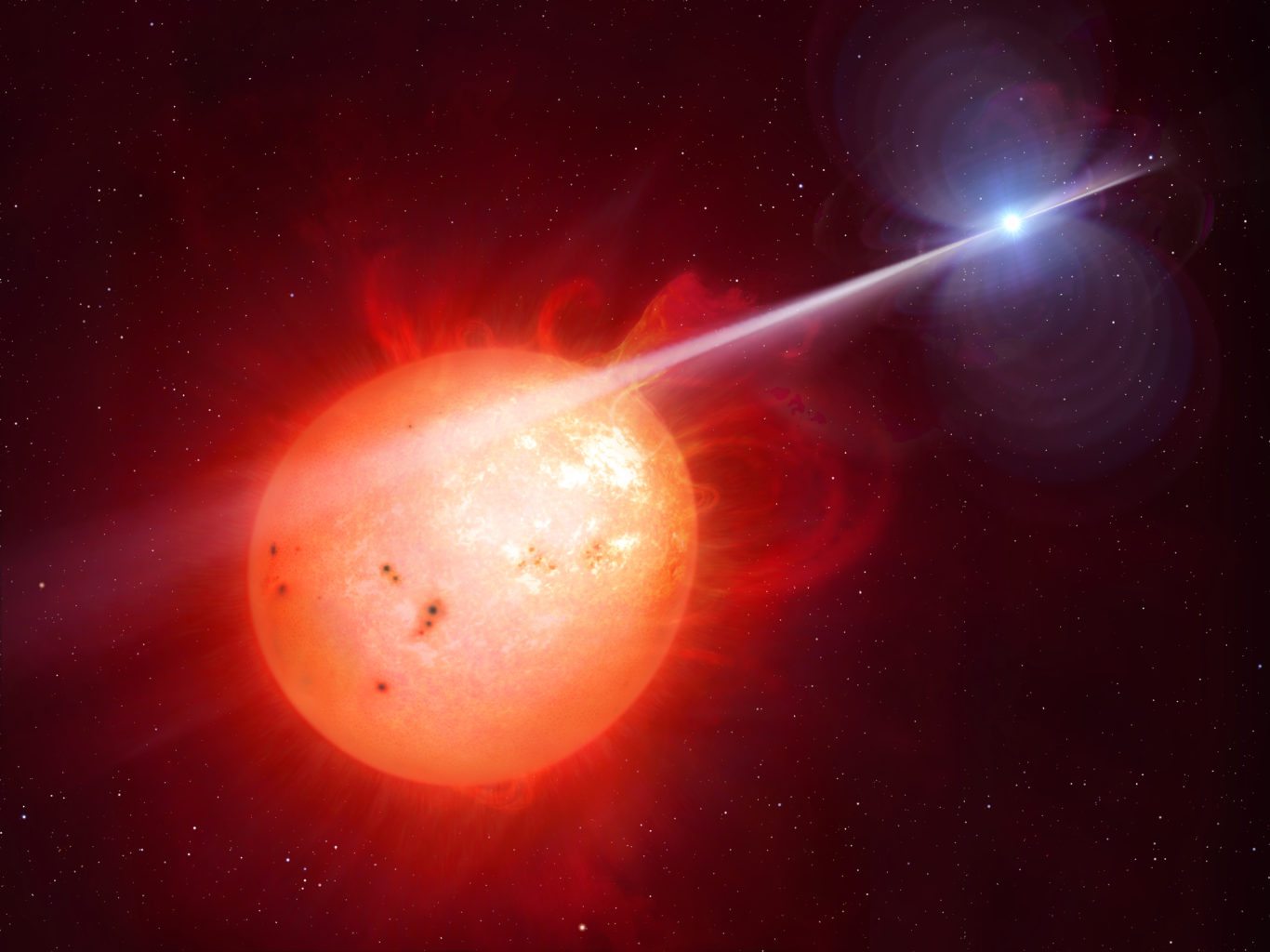Warwick researchers discover the first white dwarf pulsar
A white dwarf pulsar — the first of its kind — has been discovered by researchers at the University of Warwick. The pulsar in question, AR Scorpii (AR Sco), is a binary system containing a white dwarf (the same size as the Earth but 200,000 times heavier) and a cool red dwarf companion star.
The two stars in AR Sco orbit each other once every 3.6 hours, at a separation three times that of the Earth and Moon. The pair are 380 light years from Earth, which is relatively close in cosmic terms.
Pulsars (i.e. “pulsating stars”) are rapidly rotating stars that shoot out jets of electromagnetic radiation, which, like lighthouse beams, sweep across the sky and appear to us on Earth as a blinking dot. They were first discovered in 1967 by postgraduate student Jocelyn Bell, and the 1974 Nobel Prize for Physics for this groundbreaking work was awarded to her supervisor Professor Antony Hewish, and radio astronomer Professor Martin Ryle.
Until now, the only pulsars to be observed have been neutron star pulsars.
Until now, the only pulsars to be observed have been neutron star pulsars. Neutron stars are incredibly small (~15km diameter) stellar cores that are left behind after supernova explosions, and are the densest stars that are known to exist. White dwarfs such as AR Sco have a much less violent past than their neutron star counterparts — they’re the burnt-out remnants of stars that weren’t massive enough to undergo a supernova explosion.
In early 2016, AR Sco was discovered to emit pulses of light across the electromagnetic spectrum, from X-rays all the way down to radio waves. This is unusual for a white dwarf system; the light they emit rarely reaches frequencies lower than mid-infrared, let alone entering the radio part of the spectrum.
Further study by Professors Tom Marsh and Boris Gänsicke (University of Warwick), along with Dr David Buckley from the South African Astronomical Observatory, revealed that AR Sco was indeed a white dwarf pulsar.
This powerful beam accelerates electrons in the atmosphere of the red dwarf to almost the speed of light, an effect that has never been observed before in similar binary systems.
The highly magnetic white dwarf in AR Sco lashes its neighbour with a beam of radiation every two minutes, causing the entire system to brighten and fade periodically. This powerful beam accelerates electrons in the atmosphere of the red dwarf to almost the speed of light, an effect that has never been observed before in similar binary systems.
Professor Boris Gänsicke comments: “AR Sco is like a gigantic dynamo: a magnet, size of the Earth, with a field that is ~10,000 stronger than any field we can produce in a laboratory, and it is rotating every two minutes. This generates an enormous electric current in the companion star, which then produces the variations in the light we detect.”
This exciting discovery confirms the long-theorised possibility of white dwarf pulsars, and leaves many questions about the nature of these objects.

Comments